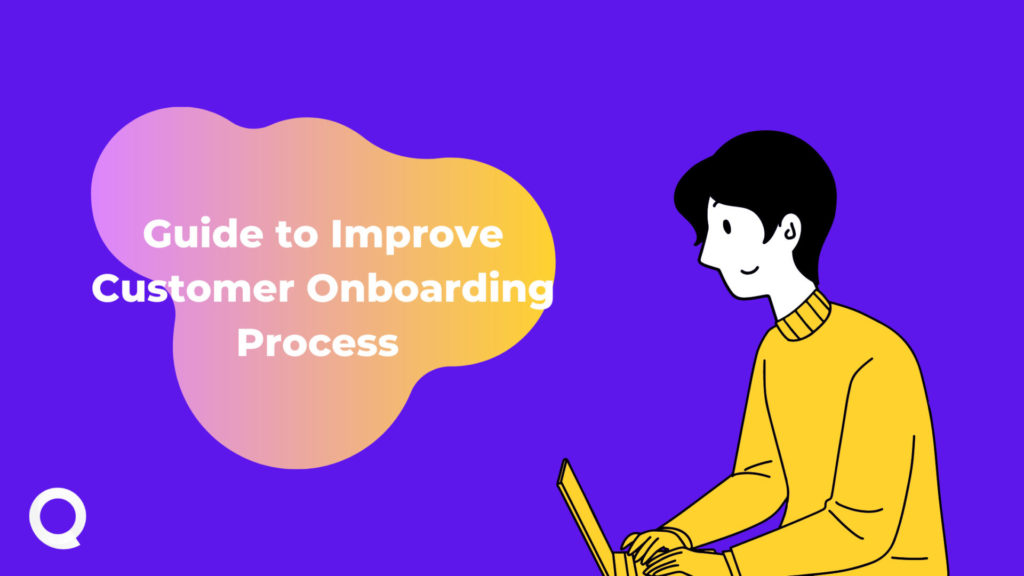Customer onboarding process should be simple and uncomplicated as much as possible. Customer’s good perceptions for your brand, as well as their chances of becoming a customer, are more when they observe the speed, simplicity, security, and convenience you display throughout onboarding. That may seem excessive, but keep reading to find out why it makes perfect sense. First impressions are important. The first impression you make on a customer has a significant influence on how they see the agency as they work with you, and it may even affect how long they stay with the organization.
In this article, we’ll look at customer onboarding and everything that goes into developing a successful strategy, and here we go:
Why is smooth Customer Onboarding Process so important?
It is well said that when you hold a customer’s hand, they’ll be loyal towards you. This remark openly recognizes the importance of initial impressions, as well as people’s desire to remain with what they know works for them. If you can satisfy your users that your product or service meets their expectations during the first onboarding phase, you will have a lifelong customer.
Different Customers Different Requirement

It is unlikely that every user would like the same thing. Various people will have different perspectives and options. But if you pay attention to your customers, understand what they require, and ensure that you are consistently offering value. It is also true that customer onboarding process works best when we put continuous efforts into it rather than something that occurs only within the first 30 or 90 days after a new sign-up.
Keeping It Simple, Stupid

Overburdening customers with demand for unnecessary documents, a large number of calls for every small and big detail, and other onboarding processes, you simply move away from having new customers before they’ve even begun.
Why confuse your user with hectic process and material, if you can understand your user profile by fetching information from various 3rd party sources. This is the initial stage for keeping things simple and easy. Always make sure that any information you provide throughout the onboarding process must be presented in a very simple way so that customers will not face any problem and stay with you for a long time.
Keep Improving
Many businesses do onboarding wrong because they take it as a one-time process. People think that concentrate on the first 30 days, will be enough but the customer onboarding process improvement is a continuous process. Listening to the customers, understanding their requirements, and providing them what they want is the basic foundation of a better customer onboarding process.
Onboarding is a continuous procedure that does not stop after a certain number of days. Keep clear onboarding goals in mind, and don’t stop paying attention to your customers once they’ve completed their onboarding.
Utilize Feedbacks
Always listen to your customers’ feedback on your onboarding process, since this is the only way to enhance it. Following the concept of onboarding as a continuous process will not always be beneficial. Creating and executing a defined process for client onboarding that includes methods for collecting feedback, and measuring KPIs will ensure that your onboarding process is always ready to adjust to the changing customer requirements.
Taking feedback about the customer onboarding process is one of the best ways to know about your customers. Taking feedback from your customers and then working over those feedbacks is a way to improve your onboarding process in a better way.
Ways to Improve Customer Onboarding Experience

Consider the following easy actions to enhance client onboarding experience:
Welcome Customers
Start on the right foot by sending a pleasant welcome email to your new customer. Tell them how excited you and your team are to be working with them and give any relevant information, such as contact information, contract copies, policy information, etc. Introduce any team members with whom they will be in contact and inform them that they would be in touch shortly with further information.
Each email you send to a customer should include a list of the next tasks. Clients want to know how the process is progressing and what they may expect. The most common error made throughout the onboarding process is keeping clients in the dark.
Understand Customer
We learned a lot about the client’s business and industry whenever we take them onboard, but it’s important to build on this throughout the onboarding process and obtain any missing facts. Forms, phone calls, and emails are just a few examples of how you might collect information. No one enjoys filling out forms, but if your client understands why this is an important step, they will be more likely to provide you with useful and thorough information.
Also Read: Why Digital Client Onboarding Is a Must Now?
Understand Customer Expectation
As soon as you gathered the necessary information, schedule an onboarding meeting to go over everything and ensure you’re both on the same page. You can begin a more detailed discussion of their goals, needs, and expectations. Take advantage of this opportunity to know your customer in deep and carefully listen and note down every important detail. If there is anything you need to clarify, now is the time to do so. Tell them the whole process and inform the client of what you can and cannot achieve for them. Never misguide your customers by giving unnecessary hopes.
Motivate Team
Onboarding is not about your customers it is about your team. It is our responsibility that everyone in our team is up to speed on the new customer, including all the information about their company and the projects you’ll be working on for them. Make as many suggestions as you can on how you may assist your customers in reaching their objectives. You and your team will be inspired, and your team will have a better understanding of the customer’s onboarding.
Conclusion
A strong onboarding process ensures that you get off to the greatest possible start with a customer, boosting your chances of being satisfied with each other. While creating a successful onboarding strategy may require some work upfront, it will save your team time and help your agency function more effectively in the long term.
That is what we have done in this article; we have discussed why customer onboarding is so important, what types of users and what their needs are, how to keep your customer onboarding process as simple as possible, how to continuously improve your onboarding process, what the importance of user feedback, and how to improve customer onboarding process.


